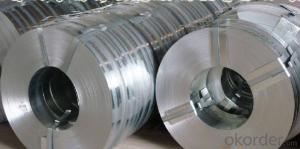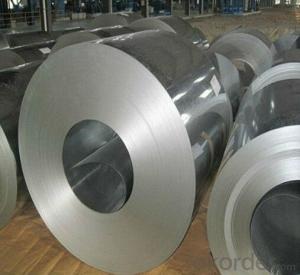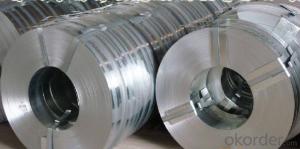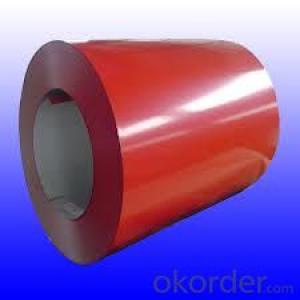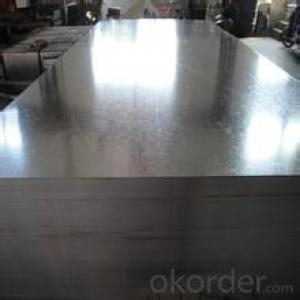Hot-dip Zinc Coating Steel --Our Best Price Best Quality in China
- Loading Port:
- China main port
- Payment Terms:
- TT OR LC
- Min Order Qty:
- 50 m.t.
- Supply Capability:
- 10000 m.t./month
OKorder Service Pledge
OKorder Financial Service
You Might Also Like
Hot-dip Zinc Coating Steel --Our Best Price Best Quality in China
1.Structure Description:
Hot-dip galvanized steel coils are available with a pure zinc coating through the hot-dip galvanizing process. It offers the economy, strength and formability of steel combined with the corrosion resistance of zinc. The hot-dip process is the process by which steel gets coated in layers of zinc to protect against rust. It is especially useful for countless outdoor and industrial applications. Production of cold formed corrugated sheets and profiles for roofing, cladding, decking, tiles, sandwich walls, rainwater protective systems, air conditioning duct as well as electrical appliances and engineering.
2.Main Features of the Hot-Dip Galvanized Steel Sheet:
• Excellent process capability
• Smooth and flat surface
• Workability, durability
• Excellent anticorrosive property
• High strength
3.Hot-Dip Galvanized Steel Sheet Images
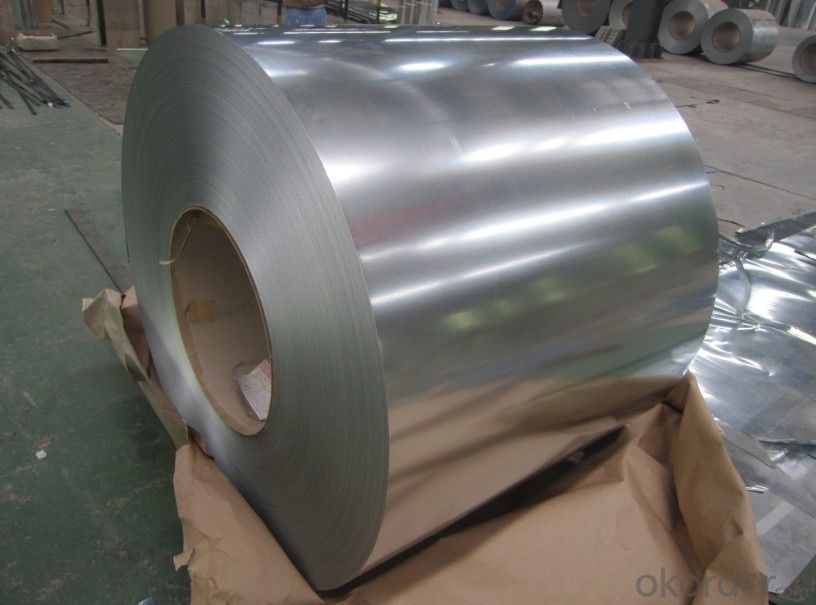
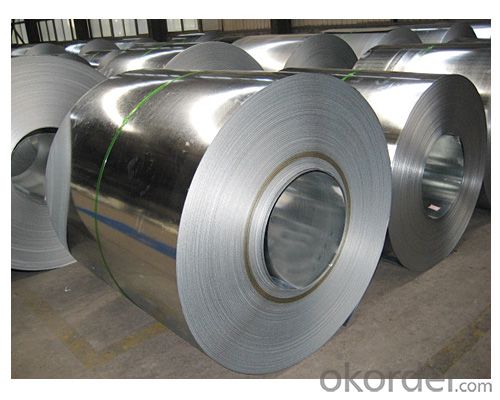
4.Hot-Dip Galvanized Steel Sheet Specification
Standard: ASTM, JIS,EN
Grade: CS, DX51D+Z,SGCC, SS 230~550,S220GD+Z~S550GD+Z, SGC340~SGC570
Thickness: 0.18mm~5mm
Width: max 2000mm
Coil weight:3-12 MT
Coil ID:508/610mm
Surface structure: zero spangle, regular spangle or minimum spangle
Surface treatment: Chromate treatment, Oiled/dry, skinpassed/non-skinpassed
Packing: Standard seaworthy export package
5.FAQ of Hot-Dip Galvanized Steel Sheet
We have organized several common questions for our clients,may help you :
1.How to guarantee the quality of the products?
We have established the international advanced quality management system,every link from raw material to final product we have strict quality test;We resolutely put an end to unqualified products flowing into the market.
2. How long can we receive the product after purchase?
Usually within thirty working days after receiving buyer’s advance payment or LC. We will arrange the factory manufacturing as soon as possible. The cargo readiness usually takes 15-30 days, but the shipment will depend on the vessel situation.
- Q: How are steel coils used in the manufacturing of automotive parts?
- Steel coils are used in the manufacturing of automotive parts as they provide a versatile and cost-effective material for producing various components. These coils are first processed and shaped into specific forms, such as sheets or strips, which are then further worked on to create parts like body panels, chassis, and suspension components. The high strength and durability of steel make it suitable for ensuring the structural integrity and safety of automobiles, while its malleability allows for easy forming and welding processes.
- Q: many sword sellers sell swords made of 440 and stainless, i know those are both totally **** for real swords. so are 1045, 1060, or 1095 good grades of steel for a sword?
- You'll okorder has a great introductory articles on metallurgy as it pertains to swords. Check 'em out.
- Q: How are steel coils made?
- Steel coils are made through a process called hot rolling, where a large slab of steel is heated and passed through a series of rolling mills to gradually reduce its thickness and shape it into a coil.
- Q: How are steel coils used in the production of heating and cooling systems?
- Steel coils are used in the production of heating and cooling systems as they serve as the main component of the heat exchanger. These coils are responsible for transferring thermal energy between the air and the refrigerant, allowing for efficient heat transfer and regulation in the system.
- Q: I have a steel garage, it looks worn out hauled away? How can I maintain / repair it?
- Maintaining Your Steel Garage: # Clean your garage doors with a mild detergent using a soft car brush four times a year. # Clean the doors whenever they wash you car (washing your garage doors regularly will reduce the build up of corrosive elements) #Avoid using any abrasive cleaners or corrosive chemicals on or around your garage doors. # Avoid using salt near the garage door as it may corrode the door elements / hardware. Or you can paint your steel garage: #Step 1 Clean the door using a low-pressure sprayer. Combine 5 gallons of warm water and 1 cup of low-phosphate detergent to clean the surface. Rinse well and dry the surface. #Step 2 Lightly sand and smooth the scratches which do not go through to the metal substrate. Dust off sand residue. For a door with a baked on finish, use a powdered cleanser (diluted with water) and a soft brush to rough up the surface for better paint adhesion; do not use sand paper. Rinse with water and allow it to dry. #Step 3 Apply primer to areas where scratches permeate to the metal substrate to avoid future rusting or corrosion. Allow it to dry. #Step 4 Paint the door with an even coat of latex exterior house paint. If your steel garage has a dent check out the site(the last source link at the bottom)
- Q: How are steel coils used in the production of fencing materials?
- Steel coils are used in the production of fencing materials as they serve as the raw material for manufacturing various types of fencing products, such as chain-link fences, barbed wires, and welded wire meshes. The steel coils are unwound and processed through different manufacturing processes, including cutting, shaping, and welding, to create the desired fencing products. The strength and durability of steel make it an ideal material for fencing, providing security and protection in various applications, such as residential, commercial, and industrial settings.
- Q: Hey everyone.I have a whetstone and a honing steel. I purposely tried to make one of my knives less sharp twice to see how well the whetstone and honing steel would work.It even seemed that when I was using my whetstone it wasn't as sharp as it was when I used my honing steel, but when I also used my honing steel after having sharpened my knife on the whetstone, it was razor sharp.I was wondering, is the whetstone only supposed to be used when the knife edge isn't as flat anymore or something? Like, only when it doesn't really have an edge anymore?Please explain your answer.Thanks everyone.
- You're not supposed to use the whetstone alone. It leaves a burr, which the steel removes. If you google using a whetstone, you'll see plenty of info. It is possible to use a finer stone in place of the steel.
- Q: How are steel coils used in the manufacturing of metal structures?
- Steel coils are commonly used in the manufacturing of metal structures as they provide a convenient and efficient way to shape and form various components. These coils are unrolled and then processed through machinery that cuts, bends, and shapes the steel into the desired size and shape. This allows for precise and consistent fabrication, making it easier to assemble and construct metal structures such as buildings, bridges, and machinery.
- Q: What are the common applications of hot-rolled steel coils?
- Hot-rolled steel coils are widely used in various industries due to their unique characteristics and versatility. Some of the common applications of hot-rolled steel coils include: 1. Automotive industry: Hot-rolled steel coils are extensively used in the automotive sector for manufacturing various components like frames, doors, hoods, wheels, and chassis. The high strength and formability of hot-rolled steel make it an ideal choice for producing durable and lightweight automotive parts. 2. Construction sector: Hot-rolled steel coils are widely used in construction projects for manufacturing structural components like beams, columns, and trusses. The high strength and ductility of hot-rolled steel make it suitable for withstanding heavy loads and providing structural stability. 3. Manufacturing industry: Hot-rolled steel coils find applications in the manufacturing sector for producing a wide range of products including machinery parts, pipes, tubes, and equipment. The excellent machinability and weldability of hot-rolled steel allow for easy fabrication and customization according to specific manufacturing requirements. 4. Energy sector: Hot-rolled steel coils are used in the energy sector for manufacturing pipelines, tanks, and other infrastructure required for oil and gas exploration, transmission, and storage. The corrosion resistance and strength of hot-rolled steel make it a preferred choice for such applications. 5. Appliances and furniture industry: Hot-rolled steel coils are used in the manufacturing of appliances like refrigerators, ovens, and washing machines, as well as for producing furniture components like frames and supports. The aesthetic appeal, durability, and cost-effectiveness of hot-rolled steel make it a popular choice in these industries. 6. Shipbuilding industry: Hot-rolled steel coils are extensively used in the shipbuilding sector for constructing various components like hulls, decks, and bulkheads. The high tensile strength and corrosion resistance of hot-rolled steel ensure the durability and longevity of ships in harsh marine environments. 7. Infrastructure and bridge construction: Hot-rolled steel coils are used in the construction of bridges, highways, and other infrastructure projects. The high strength and load-bearing capacity of hot-rolled steel make it suitable for supporting heavy traffic and withstanding dynamic loads. In summary, hot-rolled steel coils find applications in various industries including automotive, construction, manufacturing, energy, appliances and furniture, shipbuilding, and infrastructure. The unique properties of hot-rolled steel, such as high strength, formability, and versatility, make it an indispensable material for a wide range of applications.
- Q: Its big and expensive and i don't know if it would have a logical purpose but its sharp as hell and awesome. Anyways, its made from surgical steel and all i have found on the internet is that its probably 316L (w/e that means). I have another knife made from 440 stainless steel and as far as i know that is pretty much the hardest stainless metal. So why would the more expensive one be made from surgical steel?
- Unfortunately okorder /
Send your message to us
Hot-dip Zinc Coating Steel --Our Best Price Best Quality in China
- Loading Port:
- China main port
- Payment Terms:
- TT OR LC
- Min Order Qty:
- 50 m.t.
- Supply Capability:
- 10000 m.t./month
OKorder Service Pledge
OKorder Financial Service
Similar products
Hot products
Hot Searches
Related keywords
